Normal probabilities
Foundations of Probability in Python

Alexander A. Ramírez M.
CEO @ Synergy Vision
Probability density
$$ $$
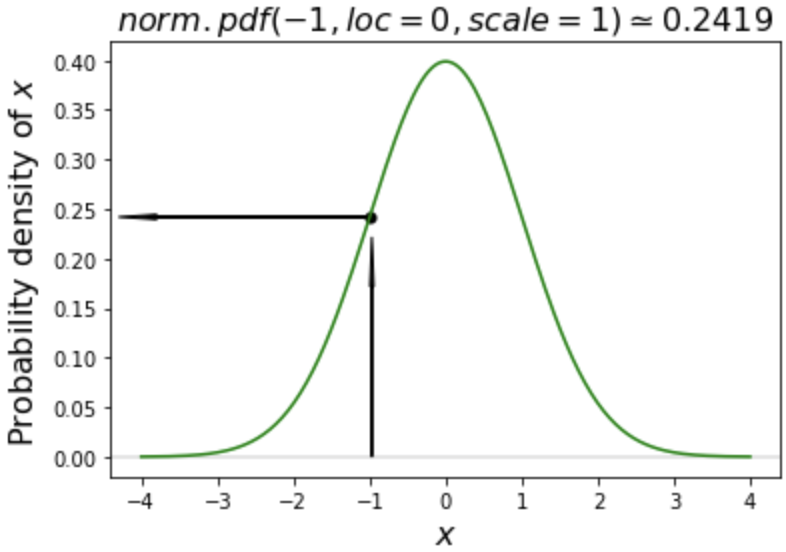
In Python this can be done in a couple of lines:
# Import norm
from scipy.stats import norm
# Calculate the probability density
# with pdf
norm.pdf(-1, loc=0, scale=1)
0.24197072451914337
loc parameter specifies the mean and scale parameter specifies the standard deviation.
pdf() vs. cdf()
$$ $$

$$ $$
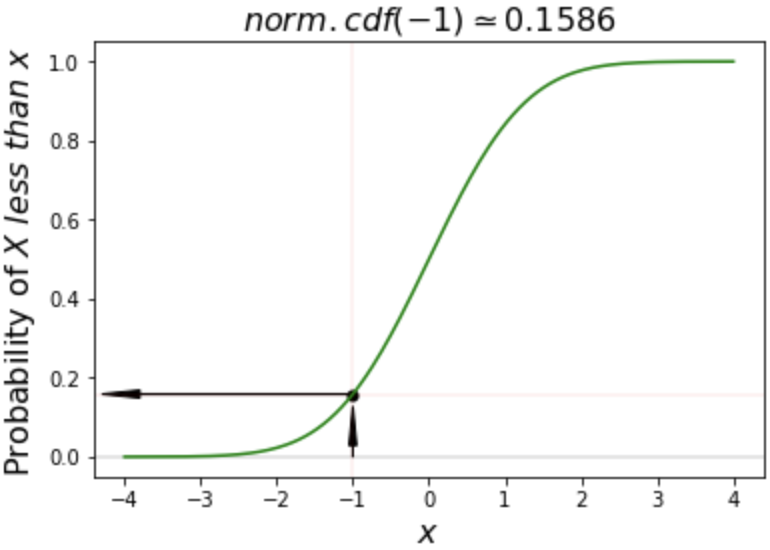
pdf() vs. cdf() (Cont.)
$$ $$
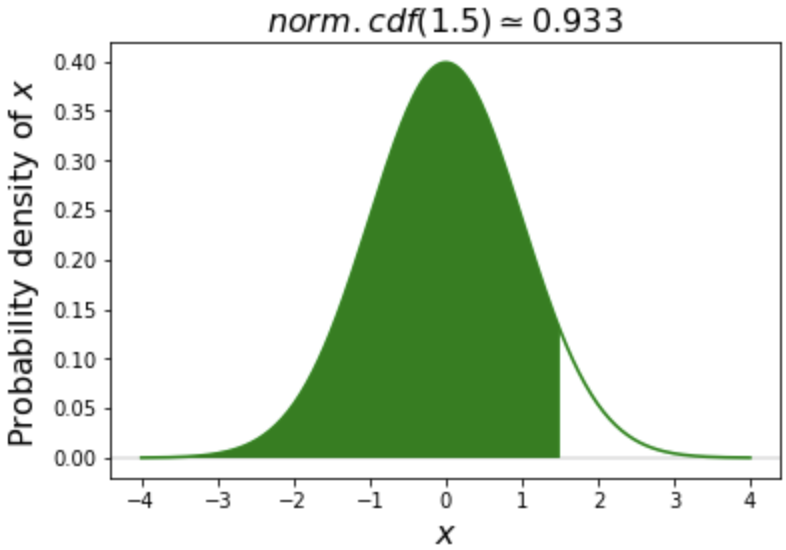
$$ $$

pdf() vs. cdf() (Cont.)
$$ $$

$$ $$

Cumulative distribution function examples
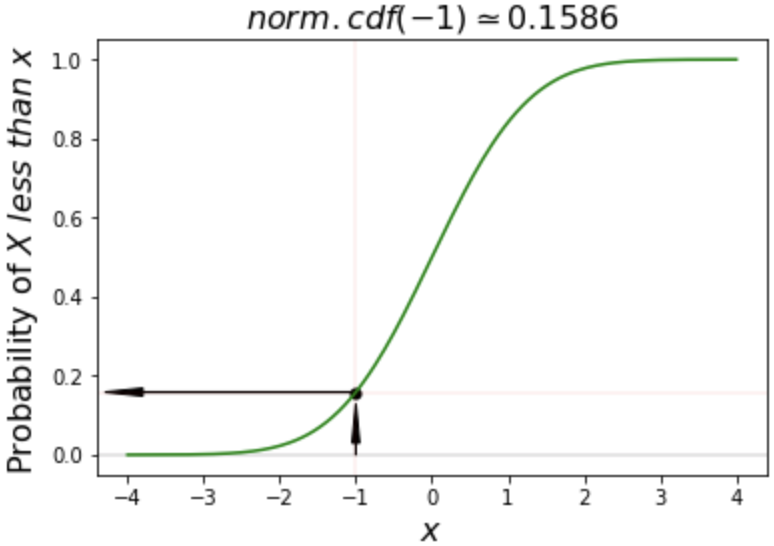
# Calculate cdf of -1
norm.cdf(-1)
0.15865525393145707
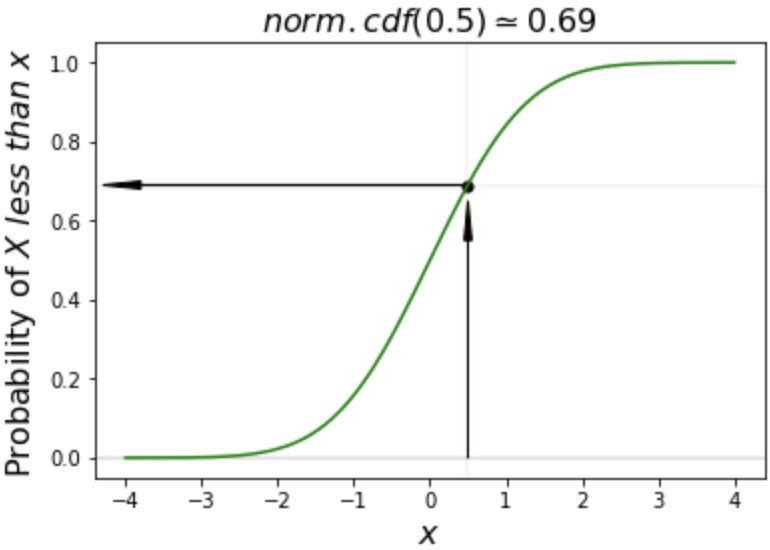
# Calculate cdf of 0.5
norm.cdf(0.5)
0.6914624612740131
The percent point function (ppf)
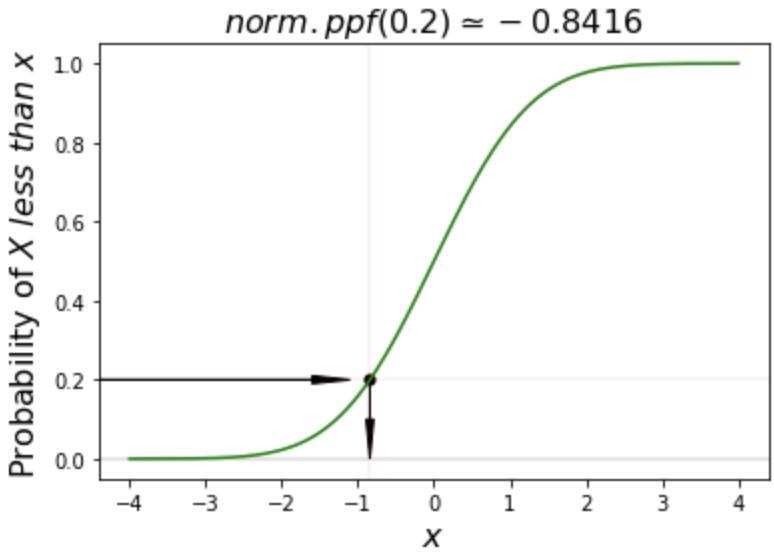
# Calculate ppf of 0.2
norm.ppf(0.2)
-0.8416212335729142
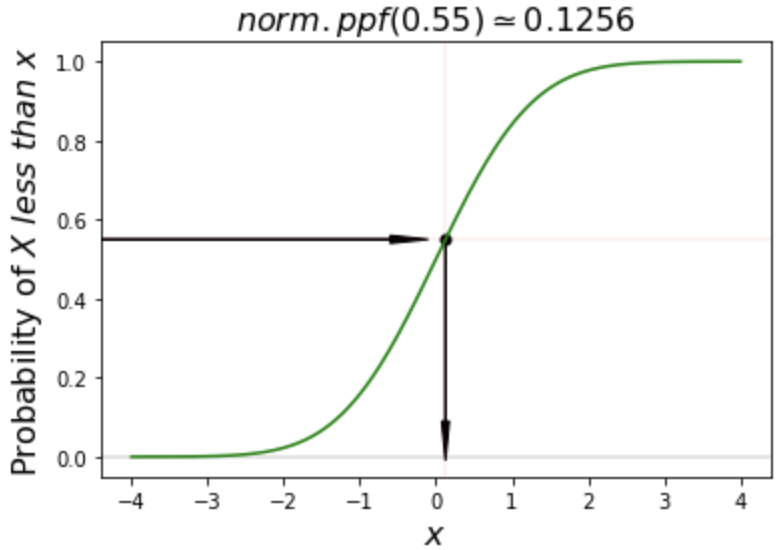
# Calculate ppf of 55%
norm.ppf(0.55)
0.12566134685507416
ppf() is the inverse of cdf()
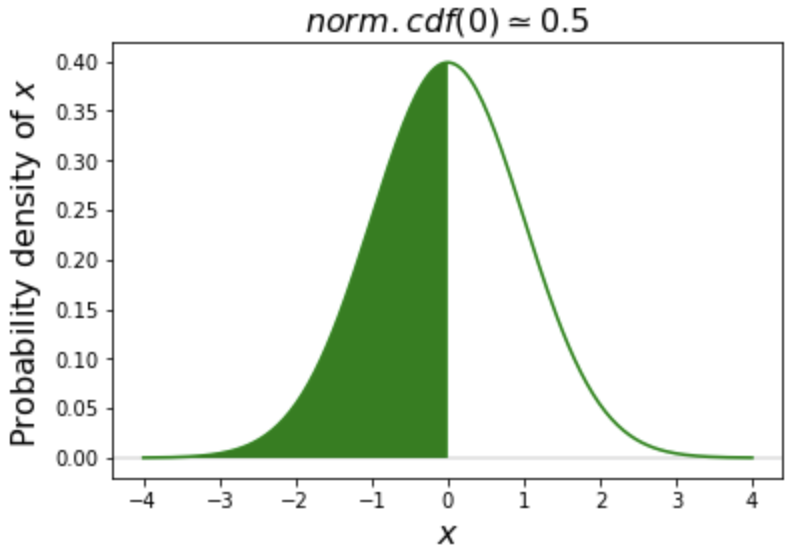
# Calculate cdf of value 0
norm.cdf(0)
0.5
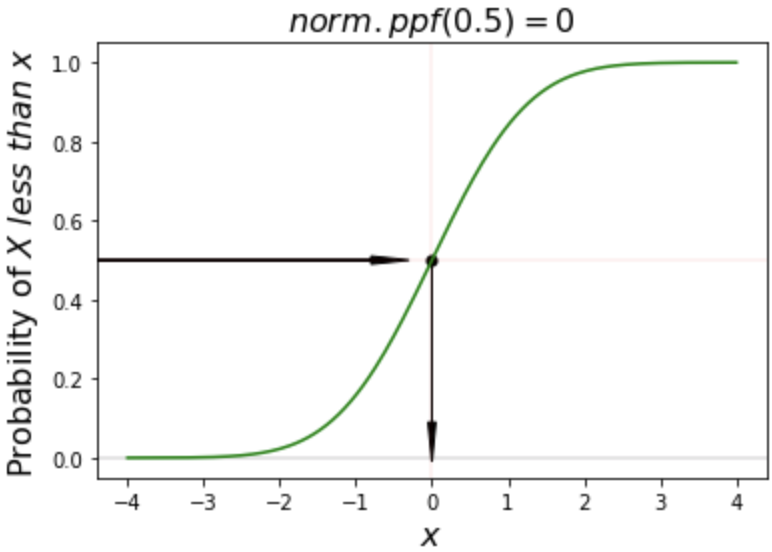
# Calculate ppf of probability 50%
norm.ppf(0.5)
0
Probability between two values
$$ $$
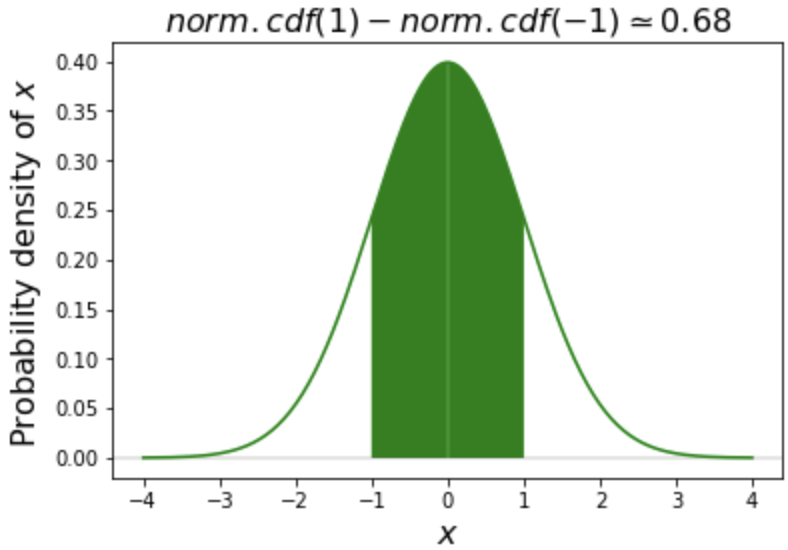
$$ $$
# Create our variables
a = -1
b = 1
# Calculate the probability between
# two values, subtracting
norm.cdf(b) - norm.cdf(a)
0.6826894921370859
Tail probability
$$ $$
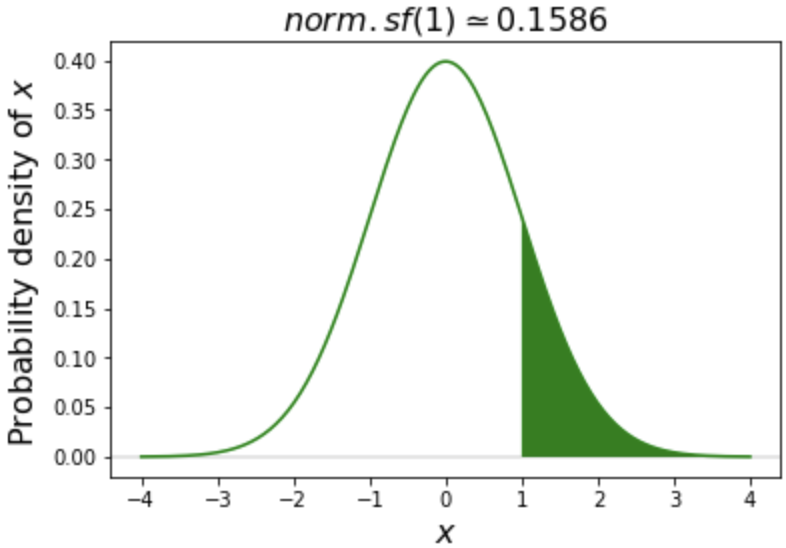
$$ $$
# Create our variable
a = 1
# Calculate the complement
# of cdf() using sf()
norm.sf(a)
0.15865525393145707
Tails
$$ $$
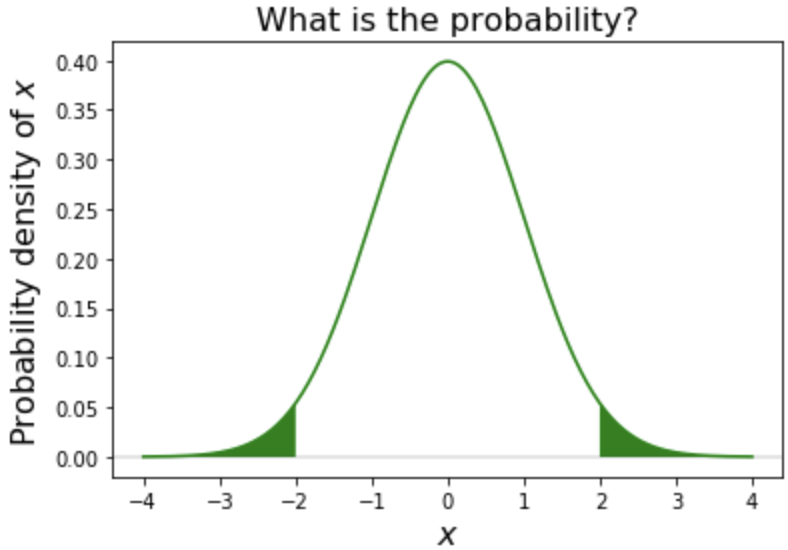
$$ $$
# Create our variables
a = -2
b = 2
# Calculate tail probability
# by adding each tail
norm.cdf(a) + norm.sf(b)
0.04550026389635839
Tails (Cont.)
$$ $$
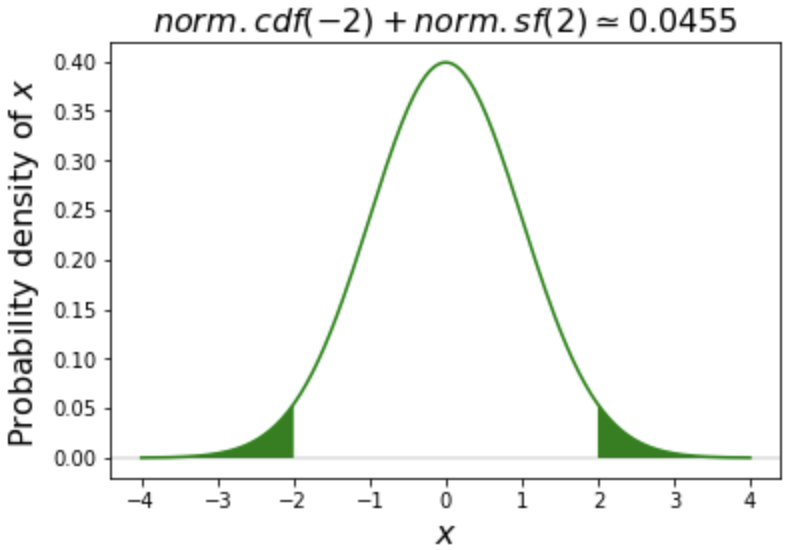
$$ $$
# Create our variables
a = -2
b = 2
# Calculate tail probability
# by adding each tail
norm.cdf(a) + norm.sf(b)
0.04550026389635839
Intervals
$$ $$
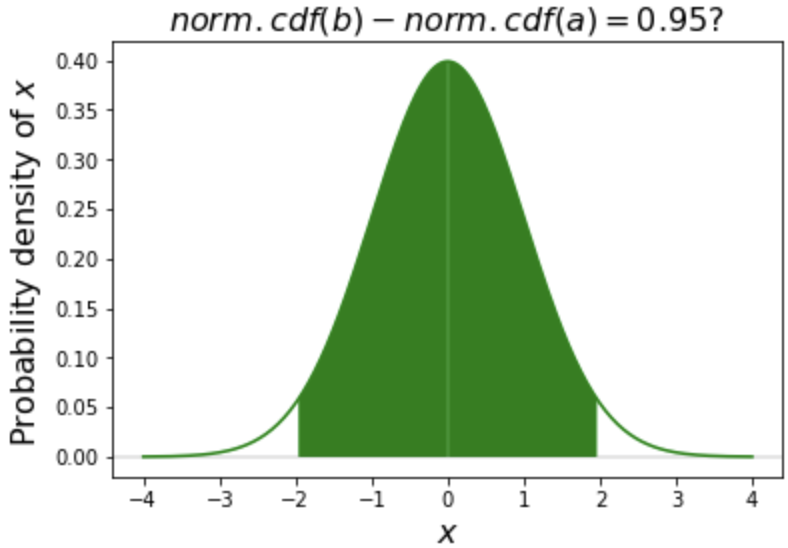
$$ $$
# Create our variable
alpha = 0.95
# Calculate the interval
norm.interval(alpha)
(-1.959963984540054, 1.959963984540054)
On to some practice!
Foundations of Probability in Python

